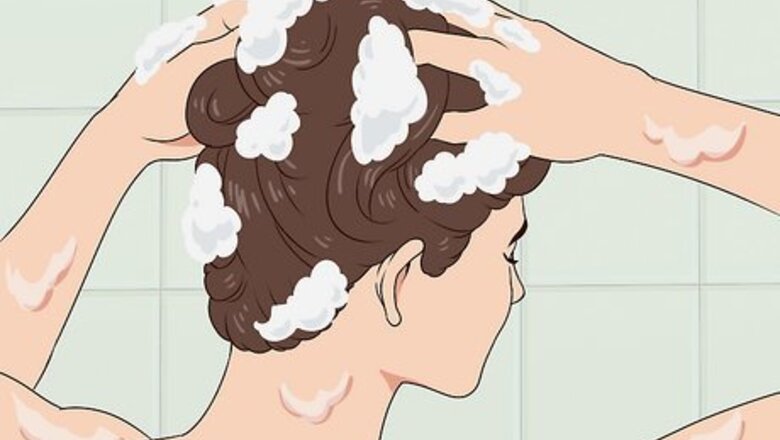
views
X
Research source
Frequent hair salons, eat a proper diet, and take care of your hair like a pro at home.
Managing Hair Basics
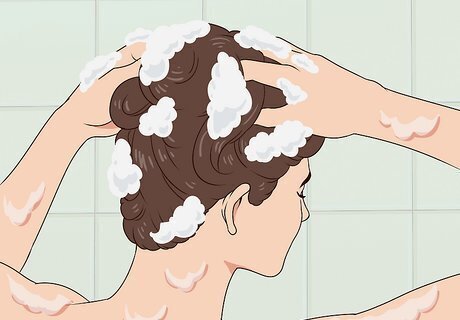
Wash your hair. Squeeze a dime-sized amount of shampoo for short hair and a quarter-sized amount for longer hair. Use cool water when rinsing off shampoo and conditioner. How often you will wash your hair depends on hair thickness, scalp oiliness, and personal preference. Wash your hair with a sulfate-free shampoo every 2-3 days if you have curly hair. Wash your hair with a volumizing shampoo for finer hair, straight hair. Maintain regular washing with shampoo once or twice a week, and co-wash (use conditioner to wash only) on other days for curly, relaxed ethnic hair.

Squeeze moisture from hair after shampooing. Pat dry with a clean towel, and comb it thoroughly. Don't brush when it is dry as it will cause more frizz. Treat your hair like you would your favorite sweater. Keep in mind that wringing out moisture, towel drying, and blowdrying can be damaging to your hair. Do this gently.
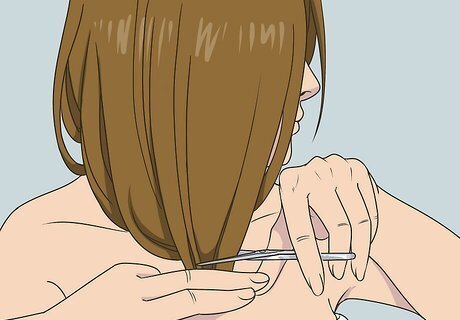
Trim your hair regularly. Even ⁄4 inch (0.6 cm) a month or every six weeks makes all the difference in the health of your hair. If you are trying to let your hair grow out, nip the damaged and split ends for health just the same. You will still gain length! Hair that is allowed to grow untrimmed will eventually start to break at the ends from wear, and you will lose hair faster than it can grow. Short hair should be trimmed every 4-8 weeks to maintain your style and cut. Medium length hair should be trimmed 6-12 weeks. Long hair should be trimmed every 8-12 weeks.
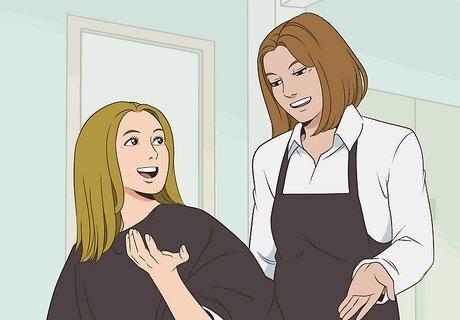
Get a low-maintenance haircut. Find a style that fits your face shape and your hair type, and get runway ready in 10 minutes or less! Thicker hair types should choose to maintain long hairstyles at least below your shoulders, as short cuts can poof out and appear frizzy. You should also ask your stylist for long layers around your face to create a flattering shape. Thin hair should avoid layers and embrace an easy one length cut. Any length is fine, but make sure you don't add bangs! If your hair is curly, opt for an angular lob that is longer in the front than in the back. You should also ask your stylist for layers to thin out your hair. Wavy haired styles can go either any length. Just make sure to ask for layers and touch up any frizz with your favorite styling product. For straight hair, well-blended layers and long locks are your best friends.

Take hair vitamins and maintain a nutritious diet. Lacking a good diet can lead to anemia, fatigue, weakness, constipation, loss of appetite, and weight loss. Drink water to hydrate yourself. Eat foods rich in in B12. Some foods you can include are meat, fish, poultry, milk products, and eggs. For vegetarians and vegans, your fortified breakfast cereal often includes part of the daily dietary guidelines.
Managing Curly or Dry Hair
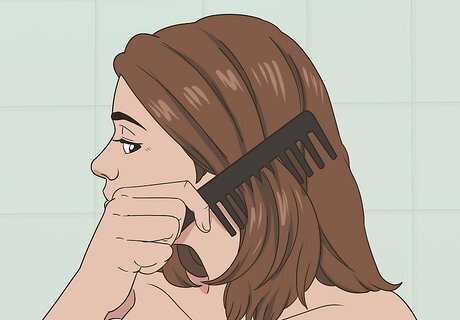
Use the right tools and processes. Use deep moisturizing shampoos and conditioners. Layer light de-frizzing products at every stage in your grooming process rather than using one heavy product at a time. Use a wide-toothed comb instead of a brush. Never brush your hair when wet. Comb your hair starting from the ends to your roots. This will help you manage tangles better.
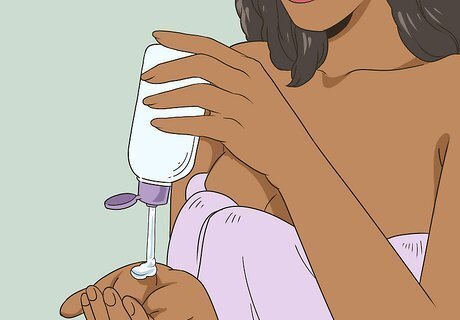
Use conditioner and moisturizing products liberally. If your hair is very dry, lacks oils, and extremely unmanageable, you do not need to use shampoo. If you use shampoo, choose a sulfate-free shampoo and concentrate on lathering it onto your scalp. Allow it to rinse off to the ends of your hair. If your hair ends up being over-hydrated and greasy, decrease the amount of and frequency of conditioner. Apply deep conditioner to your hair once a week before you shower. Protect it with a shower cap. The steam from the shower will be enough. Move on to wash your body, shave, and whatever else you need, then rinse out your hair with cool water as normal. Instead of drying your hair after your shower, apply conditioner in your hair while you're still in the shower. Comb your hair afterwards, and don't rinse the product out.
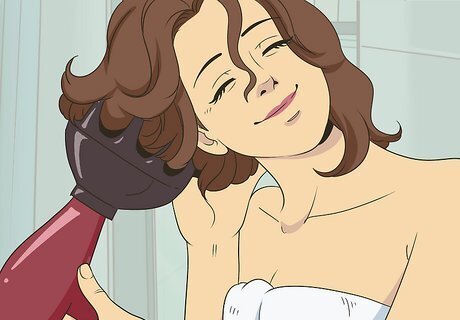
Air dry or use a diffuser. It is best to air-dry to minimize frizz; if you must, use a diffuser attachment on your blow dryer at a medium to low setting. You may also try using a t-shirt to dry your hair instead of a towel. Towels tend to absorb too much of the moisture your hair needs. The smoothness of the t-shirt allows you to leave as much as naturally possible.
Managing Straight or Greasy Hair

Use shampoo and conditioner rich in protein and glycerin. These ingredients help protect your hair from breakage. Never skip conditioner, and consider using only conditioner to wash your hair two days a week. Conditioners include small amounts of surfactants, which shampoo uses to clean your hair. The conditioner will still clean your hair without stripping it of natural oils.

Protect your hair. Use sprays that will coat your damp hair with a molecule called OFPMA. this will protect your hair up to 450 degrees and help decrease the frizz. Use argan oil if you have thicker hair.
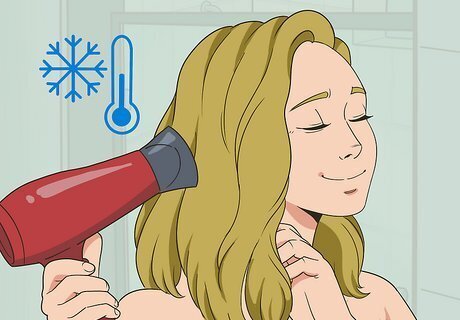
Air-dry and use a cool blow-dry setting. Ideally, you should allow your hair to air dry 90% of the way before you blow-dry. Too much hot hair can dehydrate your hair. When drying, keep the nozzle facing down on your hair, otherwise it can cause unnecessary frizz.
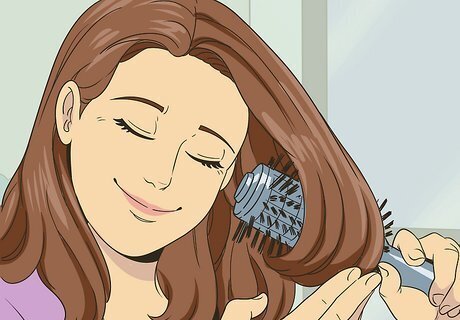
Straighten your hair minimally, and reduce heat exposure. Ironing causes a circular problem. You may desire to straighten it, but the heat causes even more frizz. If one section of your hair is more curly than the rest, like your hairline, try to straighten only the "problem" areas. Use a good ceramic round brush to straighten the rest to minimize heat exposure. Invest in good straightening tools. Ensure that your flat iron has a thermostat, and use minimum heat to straighten your hair. Stay in a range of 200-350 degrees. Do not straighten the same parts over and over again. Section out your hair, and use clips to stay on track.




















Comments
0 comment